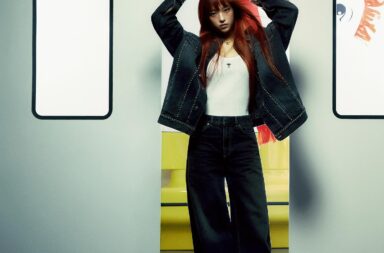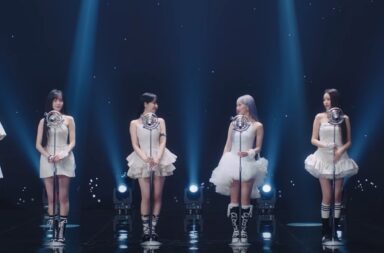
“Oh God
I was a prisoner of my reason
I wanted to set me free through salvation
No God
There’s no need for divine love anymore
Because I’m no longer
A prisoner”
Under church choirs and bells, a voice uttered the verses above in the teaser for (G)I-dle’s latest comeback, “Oh My God”, revealing a concept that grapples with divinity, sin, and redemption. Fittingly, the MV starts with an impactful introduction to that narrative. The screen expands as a desolated Minnie is dragged away in a white corridor, and her haunting verses set the mood of an experience about to begin.
To put it bluntly, “Oh My God” is a puzzling song. Written and co-produced by leader Soyeon, it features the group’s innate experimentalism and willingness to go against trends. This time, piano sounds, church bells, and 808 bass loops stand out in a minimalistic instrumental whose melodic pre-chorus plunges into a desperate, unexpected drop. This sonic oddness, however, is a fitting choice to express the group’s audacious concept.
As opposed to serving solely as a visual support, the MV serves a central part in the experience (G)I-dle wants to convey. Directed by Rigend Film, the studio who was also responsible for deeply-layered MVs such as Seventeen’s “Poison: Fear”, Taemin’s “Want”, and Iz One’s “Fiesta”, “Oh My God” features their characteristic lavish installations and futuristic aesthetics. In summary, the MV transports us to what a church might look like in the year 3000, where (G)I-dle are both the goddesses and devils of a new religion.
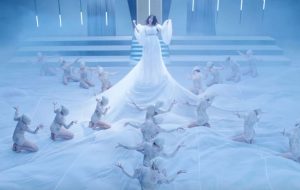
In this duality, they struggle. There is the euphoria of “being taken to the sky”, but also the guilt of surrendering to a sin through the eyes of God. Visually, these extremes are represented through an abundance of Christian elements: chalices, altars, crosses, wine, barbed wire, apples, and blood. Alongside them are representations of what a mind going insane looks like: black stains, white spaces, mental institutions, more blood, and a faceless, suffocating crowd.
The color red is used as a representation of sin and desire. The wine that encapsulates Minnie in a glass, the shreds falling around Soojin, the blood in Soyeon’s lips, the streaks in Yuqi’s eye makeup — all these elements of red consume their lives as they embrace being sinners, dirty and impure, but also seductive and powerful agents of their desires.
In contrast, white is used to represent purity and sterility. Miyeon and Shuhua, in celestial gowns and pearly makeup, are pristine angels placed on pedestals and adored by a multitude, before they end up falling into temptation. On the other hand, Minnie and Soyeon appear trapped in a white room — a limbo where they dwell their own conflicting thoughts.
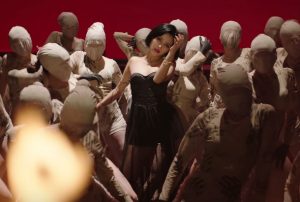
Like Lucifer who fell from Heaven and Eve who was expelled from the garden of Eden, the fall of (G)I-dle into temptation is also represented in the MV. Miyeon drops a chalice that catches fire and Yuqi literally falls into darkness. Both land in a savage underworld dominated by Soyeon, an accurate depiction of Hell in red, black, and the ever present, tormented mob of dancers.
It is worth noticing the important role of Soojin in the narrative. Depicted differently from her group mates, she appears to have fully embraced darkness, becoming an embodiment of temptation. She appears in the same altar sets as Miyeon and Shuhua, but clad in a seductive black outfit, alluring the audience with her confidence. In other shots, her silhouette is suspended in air, reenacting the ascension of Jesus into Heaven — a sight that shocks Yuqi and prompts Soyeon to surrender. During the bridge, Soojin appears dangerously close to Shuhua, almost casting a kiss on her forehead, and caresses Soyeon’s face in the next frame. These scenes reinforce the possibility of Soojin being the “she” to which the chorus refers to.
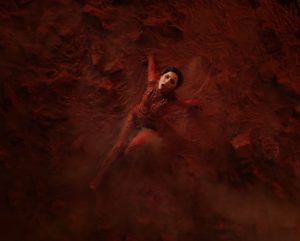
A touch of mysteriousness is added when the sentence “ab imo pectore” (“from the bottom of my heart”, in Latin) appears on screen. Besides the aesthetic effect of using an ancient language, its meaning can represent the authenticity of the feelings depicted in the song — this is not just a fleeting distraction, but a life-altering event. Suitably, the shots following suit are among the most powerful in recent K-pop history. In what appears to be a muddy sea of blood, Soyeon drenches herself in the wilderness. “If this is a sin, then I’ll pay the piper”, she raps, embracing her newfound self.
Notably, “Oh My God” provokes the audience by using female pronouns in the chorus:
Oh my god
She took me to the sky
Oh my god
She showed me all the stars
However, it smartly avoids controversy by leaving things ambiguous enough. The interpretation remains open to each viewer, as “she” can mean a myriad of things, including (G)I-dle themselves. It is also important to notice the problems of pairing a potential same-sex relationship with the notion of committing a sin. For those reasons, interpreting “Oh My God” as a tale about recognizing their own feminine power and trusting it over following divine rules remains a compelling perspective.
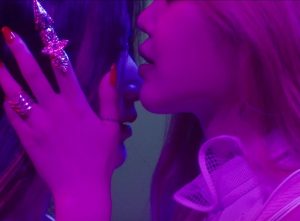
The MV does not end with a full-fledged resolution though. Contrary to Soyeon and Soojin, Minnie seems more resigned than empowered in her new reality. Her clothes and skin are smudged in black, and the dancers have left her alone. As the screen shuts, her eyes are filled with longing and her hands attempt to grasp the emptiness in front of her. Each girl deals with the meaning of guilt and redemption in a different way, providing a multifaceted representation to a universal experience.
“Oh My God” is a true testament to (G)I-dle’s daring creativity and artistry. It may incite polarizing opinions, but its resistance to provide easy answers is what makes it outstanding. Allowing for a multitude of interpretations and brimming with complex, beautiful imagery, this is a release to be talked about for many days to come.
(Youtube. Images and lyrics via Cube Entertainment.)
